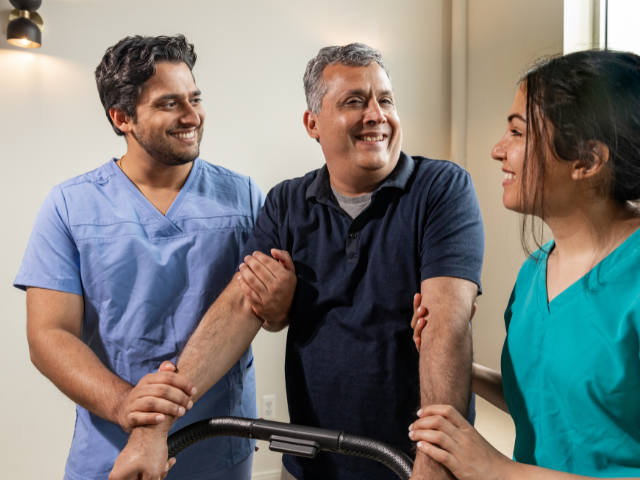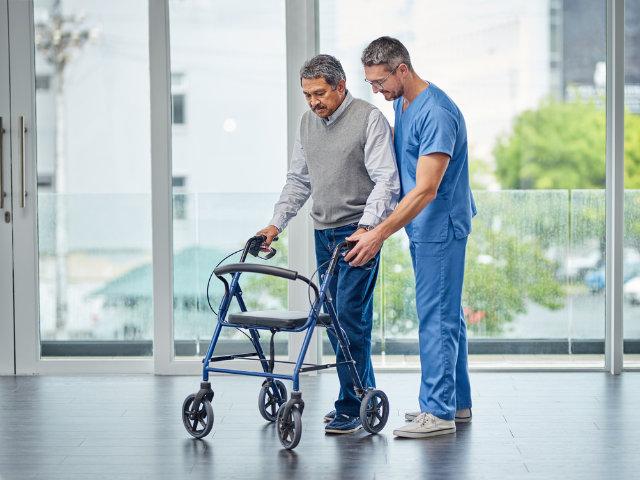Why Isn’t Rest Always the Best?
Let’s be clear. Rest is certainly a vital part of the healing process. I will never disagree with that. However, as my grandmother used to say, “Everything in moderation.” A little too much of a good thing is not always the best thing. Studies have shown that immobility has a negative impact on every system of our bodies, which means immobility can lead to psychological, cardiovascular, respiratory, integumentary, musculoskeletal, gastrointestinal, and genitourinary issues. If we think about it, mobility is movement.
Movement MOVES things: blood, air, bowels, muscles, fluid, etc. Immobile patients are at higher risk for delirium, depression, anxiety, fatigue, urinary discomfort, urinary tract infection, challenges with urinating, deep vein thrombosis, pneumonia, skin breakdown, and more. Other issues include, but are not limited to, what is listed in the table outlined by open evidence-based textbook resources.
What if My Patient Doesn’t Want to do Mobility Work?
There are several avenues to take when a patient does not want to move. Whatever avenue you take depends on the barrier or root cause of why they do not want to move. Nurses certainly have the option to document “patient refused” for various types of refusals. Depending on how overwhelmed we feel during our shifts, this option seems like the easiest way out. However, before you make that notation, ask the question, “Did I try?”
I do not like to use the words “persuade” or “convince,” as those words connotate a level of pressuring patients to do something that they may not want to do. So, my other question would be, “How did you encourage your patient to mobilize?”
One of the keys to encouraging anybody to do anything is to engage with them, give them a sense of regaining control, and bring attention to how it would benefit them. The question with most things in life is, “What’s in it for me?”
When engaging with the patient, we shouldn’t be the only person in the conversation dictating the plan for the day. Let’s face it. Unless you are someone without a home or have a dangerous living situation, not many people enjoy being in the hospital. They want to go home. Many times, the road toward discharge is the incentive for mobility. But we shouldn’t get in the habit of suggestion. It almost places us in a dictator role and removes some control from our patients, who already might feel out of control. So, instead of saying “Don’t you want to get out of here? If you move, you can get out of here,” you can try, “What are some things you were doing at home that you’re excited to get back to once you leave here?” This can open communication that will potentially encourage the patient to mobilize.
Sometimes the barrier is lack of knowledge. Among the many roles nurses have, one is the role of teacher. Patient and family teaching is of the utmost importance when encouraging activity and mobility.
While it’s true that nurses have areas where we document patient and family education in the electronic medical record, how do we know that patients truly understand what we teach them? When patients are ill, it may sometimes feel like nurses just want them to move a task box can be checked.
How do we know that patients truly understand the benefits of mobilizing while in the hospital? One way to determine if your patient understands the benefits is to have a moment of teach-back. According to the Agency for Healthcare Research and Quality, the teach-back method is a way of checking understanding by asking patients to state in their own words what they need to know or do about their health. This is not meant to test memory or verbatim regurgitation of what the nurse said. It really is a way to clarify anything that may have been misunderstood. Because the common thought can be that they need rest to heal. Patient teaching with teach-back can provide the opportunity to clarify misconceptions.
Consider asking this open-ended question during patient teaching: “We’ve gone over a lot of information, and I want to make sure I explained things clearly. So tell me, what do you think are the benefits of activity and mobility during your stay with us?” Once a plan about getting the patient moving is discussed and agreed upon, it is important to follow up. Even if means starting with, “I’ll be back at 9 a.m. to assist you with sitting on the edge of the bed to eat as discussed.”









